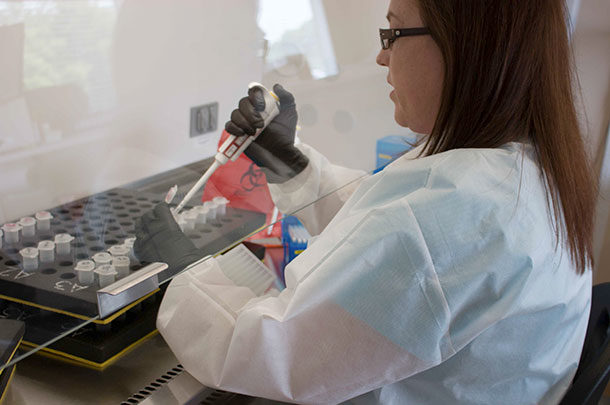“Perhaps we have been explaining this backwards to producers,” says Dr. Bill Hessman of Central States Testing (CST) in Sublette, Kansas. “To reframe the understanding, let’s say it this way: 60 percent of your cattle in a stocker, background or feedyard setting are exposed to BVD by 30 percent of the pens, which have one or two BVD-PI positive calves. The reality of this often comes as an epiphany to cattlemen when they experience above-average cattle health issues at their location.”
Understanding exposure rate, incidence rate and prevalence rate is key to wrapping your mind around the silent robber that BVD truly is.
Exposure rate – The percentage of cattle that come into contact with the BVD virus at your location. Hessman conducted a study that was published in 2009 where they tracked all BVD-PIs coming into a feeding operation and how many cattle they exposed. A PI will expose not only its entire pen, but all adjacent pens. Hessman identified that with a 0.4 percent prevalence rate, 62 percent of the feedyard was exposed to BVD. This is because at four PIs per 1,000 head, and 100 to 115 head per pen, every third pen will have a PI.
Incidence rate – The frequency of group populations that have a PI animal. In the feedyard, background or stocker setting, this is normally broken down by lots or pens. The CST data shows an average incidence rate in the range of 26 to 32 percent. In other terms, 26 to 32 percent of the incoming lots will have a PI in them. This data came from 28,500 lots of four-, five- and six-weight cattle.
Prevalence rate – The number of BVD-PI cattle within a total population of cattle. The CST data shows this number varies by weight, but the average we have found over the past 10 years for four-, five- and six-weight cattle is 0.4 percent. This means that 0.4 percent of total populations of cattle are PI, which is four PIs per 1,000 head of cattle. This data comes from over 5.7 million head tested through CST.
“We have seen 0.3 to 0.5 percent prevalence rates in BVD-PI calves upon feedlot entry,” says Dr. Dan Thomson, Jones professor of production medicine and epidemiology at Kansas State University and host of DocTalk. “The lighter weight the calves, generally the higher the prevalence rates. We estimate that one out of four pens in the feedlot industry have a BVD-PI calf in the population. Our research has shown that BVD-PI calves infect cattle in their home pen and in the pens adjacent to their home pen.”
Thomson adds, “One thing about BVD-PI testing, if you decide to test one pen, you need to test all cattle. With the movement of cattle in yards and the commingling in hospitals, we need to test and remove BVD-PIs from all cattle entering the feeding facility to be effective. It is impossible to predict which pen will have BVD-PI calves without testing.”
What do you think knowing that 60 percent of your operation could be exposed to BVD? One thing to make clear, you won’t see 60 percent of your operation in a chronic condition. Usually the signs of BVD are very subtle; 70 to 90 percent of the time it is subclinical, meaning the animal has the virus but isn’t showing signs of sickness.
More often than not, you will see decreased gain, higher cost of gain, decreased performance and higher pull rate, so subtle that you don’t realize you are getting robbed anywhere from $25 to $66 per animal that is exposed. Occasionally, you will see scenarios where you have an elevated sickness rate and maybe a few chronics. Rarely, you can have widespread, train-wreck scenarios where no amount of medicine will save you and 25 percent of the herd dies.
“One of the few problems I think we need to clear up in the cattle industry if we are to move forward with controlling the BVD-PI issue is the fact that while there is not very many of them, the small number that we do deal with cause detrimental effects to the health and performance of our cattle and you don’t even notice it,” adds Hessman. “Ultimately, testing and removing PI cattle is necessary to mitigate exposure of BVD.” ![]()

-
Dustin Hessman
- Central States Testing LLC
- Sublette, Kansas
PHOTO: Testing done at Heritage Livestock in Kentucky is focused heavily on detecting BVD-PI calves. Photo by Lynn Jaynes.
SIDEBAR: Bottom line understanding of BVD-PIs
- Exposure rate: The frequency of exposure to incidence groups [62 percent or almost two-thirds of a stocker, background or feedyard operation].
- Incidence rate: The frequency of prevalence in groups (i.e., loads) [32 percent or three loads out of ten].
- Prevalence rate: The frequency of one in the total population [0.4 percent or four per 1,000].








